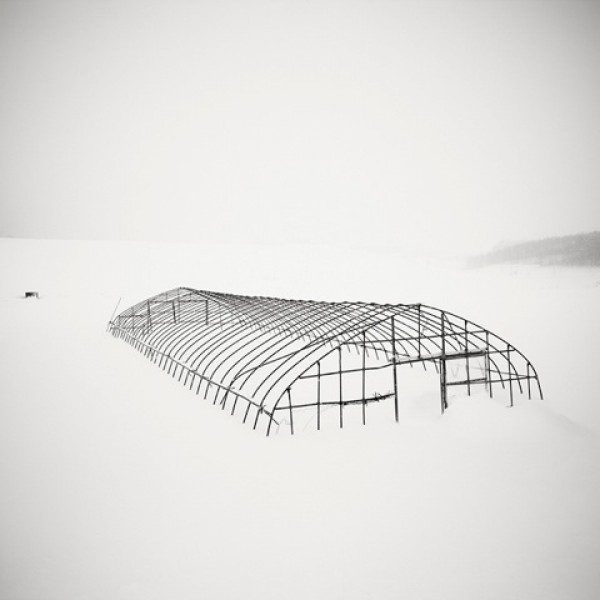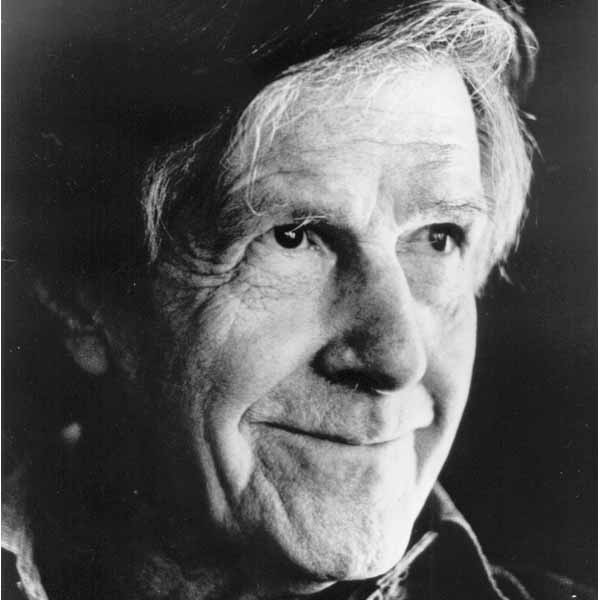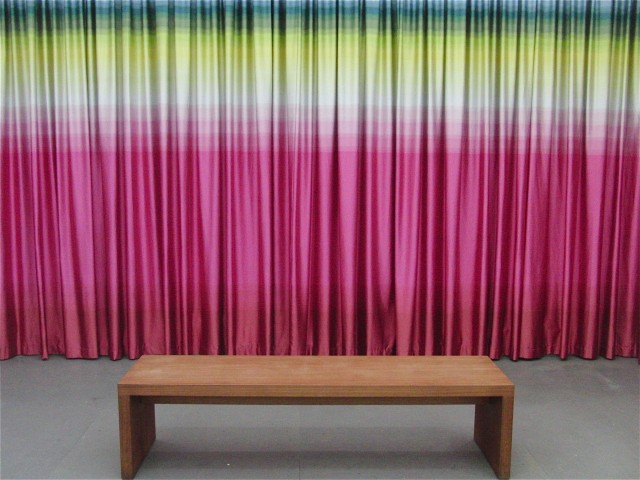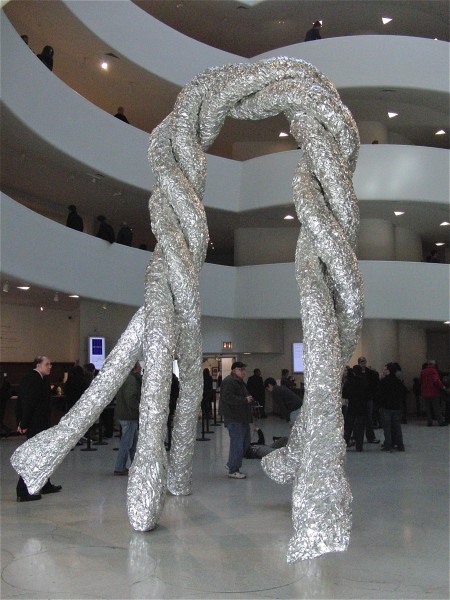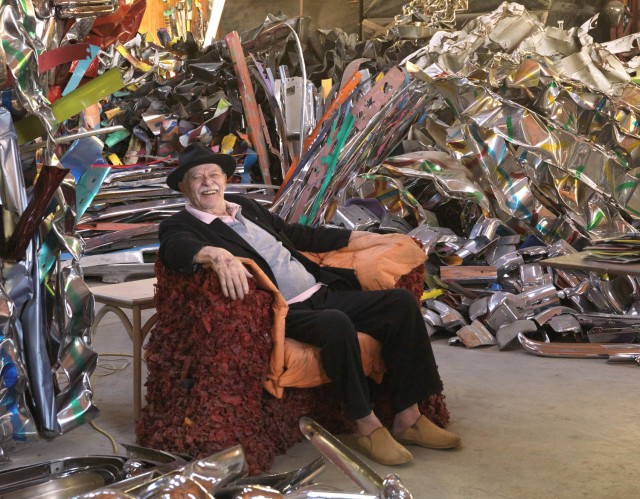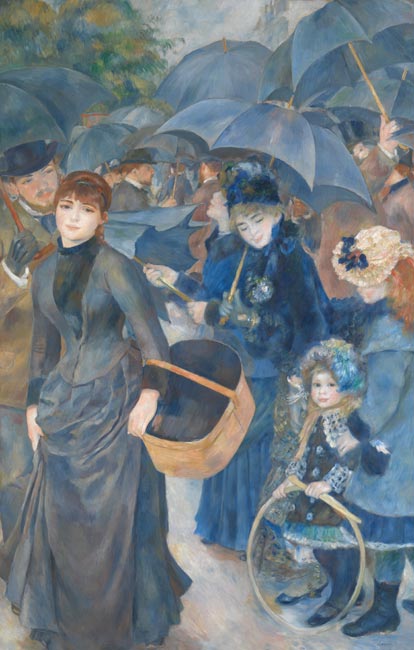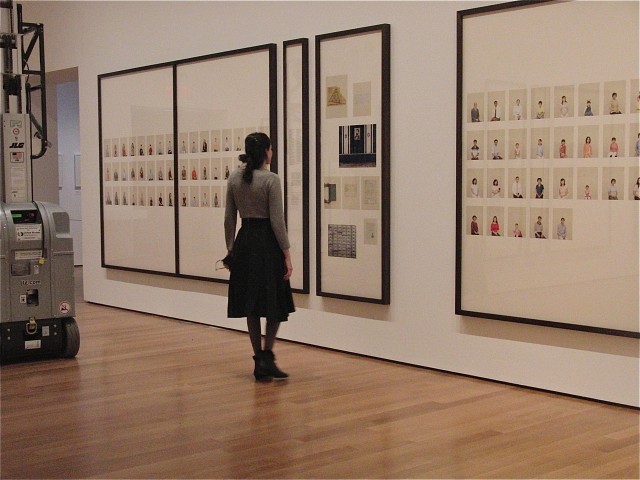
Taryn Simon examines her new photography installation at MoMA and will discuss it on May 13 at MoMA PS1 (photo by twi-ny/mdr)
A LIVING MAN DEAD AND OTHER CHAPTERS I-XVIII
MoMA PS1
22-25 Jackson Ave. at 46th Ave.
Sunday, May 14, $10, 12 noon – 6:00
718-784-2084
www.ps1.org
As it prepares for its summer Warm Up series, MoMA PS1’s final Sunday Sessions program will be held on May 13. In addition to your last chance to see the exhibitions “Darren Bader: Images” and “Kraftwerk ― Retrospective 1 2 3 4 5 6 7 8,” both of which close on Monday, legendary DJ Afrika Bambaataa will pay tribute to the German electronic music pioneers from 3:00 to 6:00 in the Performance Dome. Also at 3:00, artbook @ moma ps1 will host the book discussion group “A Short Course on Resistance.” Food will be available from Long Island City favorites M. Wells, and the exhibitions “Lara Favaretto: Just Knocked Out,” “Max Brand: no solid footing ― (trained) duck fighting a crow,” “Rania Stephan,” and “Frances Stark: My Best Thing” will also be open. We’re most looking forward to the 2:00 conversation between native New York artist Taryn Simon and MoMA PS1 associate curator Jenny Schlenzka on the occasion of the publication of Simon’s A Living Man Declared Dead and Other Chapters, I-XVIII, the catalog to the exhibition currently on view in MoMA’s photography wing. Native New Yorker Simon, whose “Contraband” filled the Lever House lobby in late 2010 with thousands of photos of items that were confiscated at JFK International Airport, has now turned her attention on bloodlines, cataloging families from around the world, organizing them in very specific order, accompanied by photos of documents and other paraphernalia relating to their story. Nine of the chapters can be seen at MoMA, including the Indian Yadav clan, which is fighting to regain land they lost when Shivdutt Yadav was wrongly listed as being deceased; the Ondijos of Kenya, where HIV/AIDS doctor Joseph Nyamwanda Jura Ondijo has nine wives, thirty-two children, and sixty-three grandchildren; the sadly small Mehićs and Nukićs of Bosnia and Herzegovina, victims of genocide; the Chinese family of Su Qijian, declared by China’s State Council Information Office as the best representative of multigenerational Chinese bloodlines; and a large group of children living in a Ukrainian orphanage. Simon also spends one chapter depicting dozens of Australian rabbits used for experimentation that ultimately died during the tests or were later euthanized. A Living Man Declared Dead and Other Chapters, which continues at MoMA through September 3, is a fascinating, involving collection of photographs of life and death, of science and politics, of the known and the unknown, intricately organized and arranged to create a complex, compelling visual narrative.
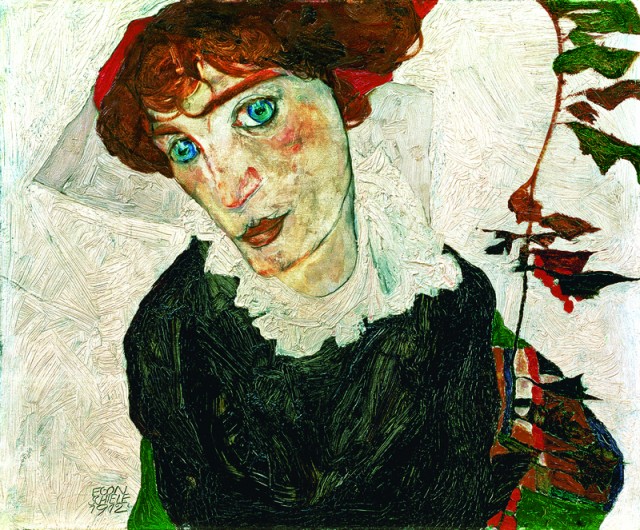
 An exciting, fast-paced documentary set in the high-stakes art world, Andrew Shea’s Portrait of Wally is a gripping real-life legal thriller, complete with international intrigue, love and death, class warfare, lies and deception, and Nazis. In 1912, Austrian artist Egon Schiele painted a small portrait of his mistress, Walburga (“Wally”) Neuzil, in addition to a companion self-portrait. In 1939, the painting of Wally was stolen from art dealer Lea Bondi’s personal collection by Friedrich Welz, a Nazi who had also taken over Bondi’s gallery because she was Jewish. When the painting suddenly showed up in New York City in 1997 as part of the Museum of Modern Art’s “Egon Schiele: The Leopold Collection” exhibition, a furious, angry thirteen-year battle ensued over ownership of the work, involving Manhattan district attorney Robert Morgenthau; MoMA director Glenn D. Lowry; Sharon Cohen Levin, chief of the Asset Forfeiture Unit of the U.S. Attorney’s Office; investigator Willi Korte of the Holocaust Art Restitution Project; Schiele-obsessed art collector Rudolf Leopold; and the Bondi family. Other major museums sided with MoMA in a concerted effort to prevent the government from returning the painting to the Bondis, claiming that it would seriously damage the ability of art institutions to bring works on loan for exhibition in the United States; interestingly, Lowry and MoMA chairman Ronald S. Lauder, who is also the head of the Commission for Art Recovery and displays many of Schiele’s paintings and drawings at his Neue Galerie in New York City, opted not to speak with Shea, but the filmmaker did meet with Morgenthau, Levin, André Bondi, New York Times reporter Judith Dobrzynski, 60 Minutes journalist Morley Safer, Galerie St. Etienne owner and Schiele expert Jane Kallir, and others who share fascinating details about the personal and professional history of Schiele and the painting as well as the inner workings of the art world. Mixing archival footage with new interviews, Shea and his wife, editor Melissa Shea, tell a compelling tale of global importance filled with powerful emotion that, in many ways, evokes the feeling one gets when looking closely at a master work of art. But Portrait of Wally is about a lot more than just art; it is also about memory, about family, about responsibility, and about justice.
An exciting, fast-paced documentary set in the high-stakes art world, Andrew Shea’s Portrait of Wally is a gripping real-life legal thriller, complete with international intrigue, love and death, class warfare, lies and deception, and Nazis. In 1912, Austrian artist Egon Schiele painted a small portrait of his mistress, Walburga (“Wally”) Neuzil, in addition to a companion self-portrait. In 1939, the painting of Wally was stolen from art dealer Lea Bondi’s personal collection by Friedrich Welz, a Nazi who had also taken over Bondi’s gallery because she was Jewish. When the painting suddenly showed up in New York City in 1997 as part of the Museum of Modern Art’s “Egon Schiele: The Leopold Collection” exhibition, a furious, angry thirteen-year battle ensued over ownership of the work, involving Manhattan district attorney Robert Morgenthau; MoMA director Glenn D. Lowry; Sharon Cohen Levin, chief of the Asset Forfeiture Unit of the U.S. Attorney’s Office; investigator Willi Korte of the Holocaust Art Restitution Project; Schiele-obsessed art collector Rudolf Leopold; and the Bondi family. Other major museums sided with MoMA in a concerted effort to prevent the government from returning the painting to the Bondis, claiming that it would seriously damage the ability of art institutions to bring works on loan for exhibition in the United States; interestingly, Lowry and MoMA chairman Ronald S. Lauder, who is also the head of the Commission for Art Recovery and displays many of Schiele’s paintings and drawings at his Neue Galerie in New York City, opted not to speak with Shea, but the filmmaker did meet with Morgenthau, Levin, André Bondi, New York Times reporter Judith Dobrzynski, 60 Minutes journalist Morley Safer, Galerie St. Etienne owner and Schiele expert Jane Kallir, and others who share fascinating details about the personal and professional history of Schiele and the painting as well as the inner workings of the art world. Mixing archival footage with new interviews, Shea and his wife, editor Melissa Shea, tell a compelling tale of global importance filled with powerful emotion that, in many ways, evokes the feeling one gets when looking closely at a master work of art. But Portrait of Wally is about a lot more than just art; it is also about memory, about family, about responsibility, and about justice.